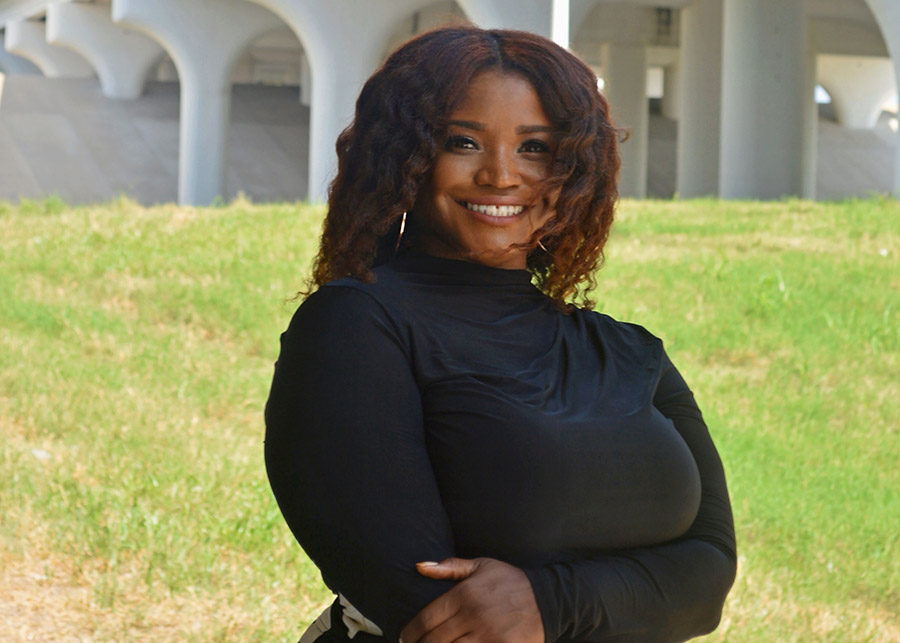Shaina Kay Armstrong (B.I.D. ’11) is the founder and director of design at SK Design Studio, Hospitality Architecture & Interiors. Armstrong said that her position in the industry is to bring diversity to design. In addition to working on a variety of project types, Armstrong has spoken at schools and colleges to encourage creative careers to underrepresented students.
When did you become interested in interior architecture and design, and why?
I started drawing and painting houses at 3 years old. Around 8 years old, I remember being excited about collecting the apartment guide and homes for sale booklets in the little machines outside the grocery store. I studied the floor plans and remembered being amazed by the many different layouts and designs. I discovered the architecture profession in the sixth grade. That’s when I decided I wanted to be an architect and interior designer.
Why did you choose to go to the University of Arkansas?
I believe the University of Arkansas chose me. It was the only school in the state that offered architecture. Out-of-state school options were not affordable. I was lucky the U of A has one of the best programs.
What has been your career path so far?
After graduating from the U of A, I got a strong start in the industry by working at the largest Black architecture firm in Arkansas at the time. Woods Group Architects is owned by a great architect, Ron Woods. While under his training, I designed mega-churches and collegiate buildings around the city and state. I also had the opportunity to work on the Bill and Hillary Clinton National Airport a few times. For the past 10 years, my career focus has been hospitality design working on hotels and resorts. I’m now implanting the model of hospitality design into corporate and healthcare projects.
What has been your favorite project to work on?
My favorite project has been the pool bar renovation at the JW Marriott Resort Desert Ridge in Phoenix, Arizona, with Leo A Daly. This was an exciting and innovative outdoor project that included a new pool bar structure, trellis, cabanas and fire pit seating submerged in a reflection pool.
What is the most challenging part of your job?
The most challenging part of my job is mixing art with business. I’m first an artist and second a businesswoman. The art component of architecture and design is where it starts. I’m in the profession because I want to create spaces from my imagination. I want to draw and sketch design solutions to deliver successful projects to the client and the public. Parallel to that is developing and maintaining a functioning business, which requires a different set of skills.
What unique experiences or perspectives do you have that make you stand out in interior architecture?
My unique position in the industry is that I represent the underrepresented. I’m a practicing interior architect in the high-end hospitality sector designing hotels and resorts around the world. My position in the industry is to bring diversity to the design. The most successful design solutions cannot be determined without a diverse and collaborative design team. A diverse team represents the world we design for.
What are your interests or involvements outside of design?
I have three major interests outside of design. The first being a great mother to my daughter, Sky. My second interest is development. Development and design cross paths. I became interested in the life of the project before reaching the designer. There is much development and many players on the team before the design and construction process. My third major interest is remote, self-sustaining living. I would like to achieve living off-grid soon.
Who have been your biggest supporters?
I have the most supportive family. They helped me through school. My family often helps me relocate for career opportunities. They assist me with building my design business however they can. My family is very encouraging and may be the cause of my ambition.
What’s the best part of your career?
It’s a never-ending learning experience. One new topic leads to another while the fine details overlap, becoming more intricate. The challenges and complexities of projects force you to learn and push you outside your mental comfort zone. This is the best part of my career.
Anything else you would like to add?
I’m grateful for my many opportunities and enjoy speaking at schools and colleges to encourage creative careers to underrepresented students. I use design as a tool to influence positive change and creative thinking in the world.
